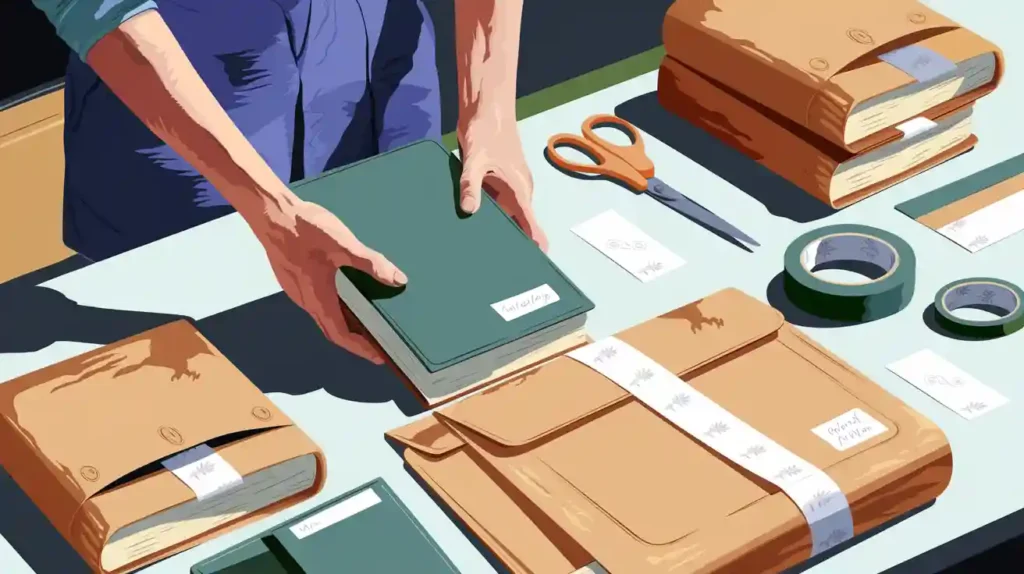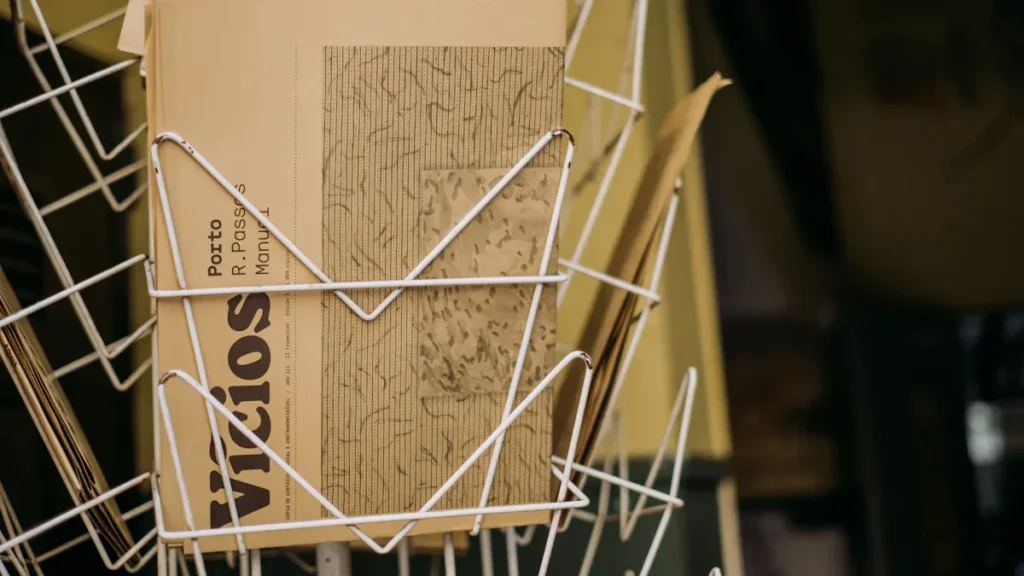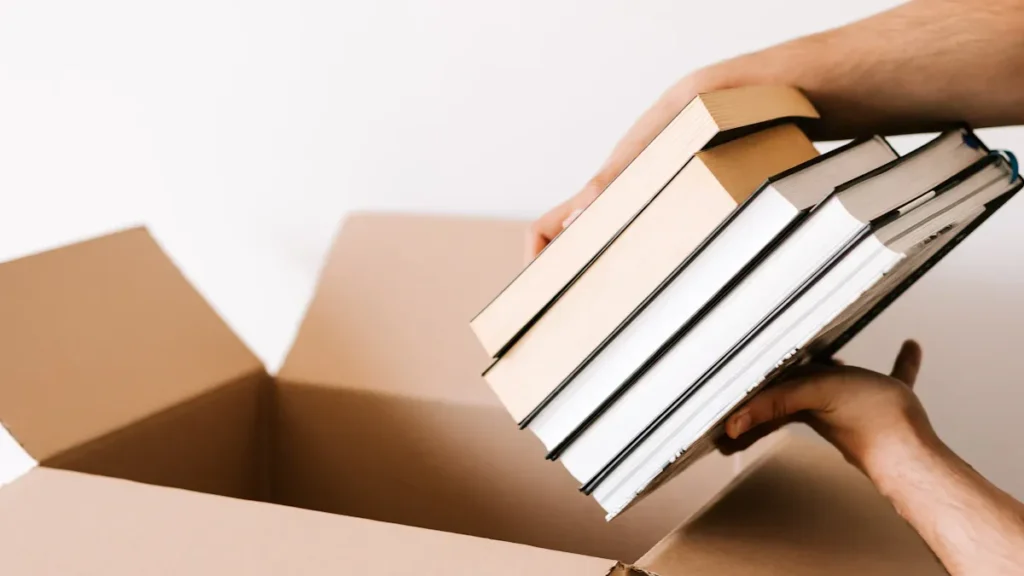
Book wrap mailers stand out as the best choice for shipping books safely. Many worry about torn corners or moisture damage, but these mailers solve those problems.
How Book Wrap Mailers Address These Issues | |
|---|---|
Damage to book corners | Slightly larger mailers prevent tight fits |
Shifting inside boxes | Padding keeps books from moving |
Moisture and dust | Protective layers block out the elements |
Key Takeaways
Use sturdy book wrap mailers with proper padding to protect books from bending, moisture, and damage during shipping.
Wrap each book separately with protective materials like plastic bags, bubble wrap, or acid-free tissue to prevent scratches and moisture harm.
Seal packages securely with self-adhesive strips and clear labels to ensure safe delivery and easy tracking.
Book Wrap Mailers

What They Are
Book wrap mailers are sturdy packaging designed to keep books and other flat items safe during shipping. They use strong corrugated cardboard, often with B-flute or E-flute construction, to provide excellent damage protection. Many mailers include kraft liners for extra durability and a clean look. Some even feature premium finishes, like gloss or matte, to make the package stand out.
Material/Component | Description |
|---|---|
Corrugated Cardboard | B-flute or E-flute, strong and protective |
Kraft Liners | Brown or white, durable and good for printing |
Self-Sealing Postal Wrap | Peel & seal adhesive for quick, secure closure |
Water-Based Inks | Eco-friendly, safe for printing |
A comic book mailer uses similar materials, making it perfect for comic book shipping. The self-sealing postal wrap keeps everything secure and tamper-proof.
Why Use for Shipping Books
Book wrap mailers offer several advantages when shipping books. Their double-folded edges and reinforced corners help prevent bending and impact damage. Adjustable depth and scored folds let the mailer fit snugly around books, reducing movement inside. This sturdy packaging is also lightweight, which helps lower shipping costs for small businesses.
Book wrap mailers provide secure packaging without the bulk of boxes.
They are easy to pack, saving time for sellers.
Comic book mailer options are perfect for comic book shipping and other collectibles.
These mailers are a reliable comic book packaging solution for anyone needing damage protection.
Compared to other packaging materials for shipping books, book wrap mailers strike the right balance between protection, cost, and ease of use. Their rigid design makes them ideal for shipping books of all sizes.
How to Use Book Wrap Mailers

Preparing Books
Getting books ready for shipping starts with a few simple steps. First, they should place each book in a plastic bag, like a large Ziploc or a newspaper sleeve. This layer keeps out water and dust. Next, they can sandwich the book between two pieces of plain cardboard. The cardboard should be just a bit bigger than the book. This step helps prevent bending and protects the cover from dents. After that, wrapping the book and cardboard in brown paper or newspaper adds another layer of protection. Taping the paper keeps everything together and clean. Now, the book is ready for the mailer.
Tip: For rare or collectible books, acid-free tissue paper works best to avoid damage over time.
Wrapping and Padding
To ship books safely, wrapping and padding matter a lot. Each book should get its own layer of bubble wrap or acid-free tissue paper. This step cushions the book against bumps and drops. After wrapping, the book goes into a plastic bag for extra moisture protection. When shipping multiple books, wrapping each one separately prevents them from rubbing against each other. Dividers or inserts between books help keep them from shifting.
They should line the bottom of the mailer with packing paper or bubble wrap. Placing the book in the center and filling any empty spaces with more packing paper or foam peanuts keeps the book snug. For heavier or fragile books, using a mailer with double layers or even a durable shipping box gives extra strength. Some mailers, like the CP 030 or CP 035, offer reinforced protection for heavy or delicate items.
Note: Always choose a mailer that fits the book’s size. A mailer that is too big lets books move around, while one that is too small can crush the corners.
Sealing and Labeling
Sealing the package the right way keeps books safe during shipping. Book wrap mailers often come with self-sealing adhesive strips. They should fold along the pre-scored lines, place the book in the center, and adjust the sides for a tight fit. Peeling the adhesive strip and pressing down creates a tamper-evident seal. For extra security, high-quality packing tape can go over all seams, especially for heavier shipments.
Labeling is just as important. Every package should have the recipient’s address, a return address, and a tracking number. Adding a barcode or QR code helps with automated sorting. Including the package’s weight and shipping date makes handling easier. If the books are fragile, a “Handle with Care” label tells carriers to be gentle.
Label Checklist | Why It Matters |
|---|---|
Recipient’s Address | Ensures correct delivery |
Return Address | Allows for returns if needed |
Tracking Number | Lets sender and receiver track package |
Barcode/QR Code | Speeds up sorting and reduces errors |
Weight and Dimensions | Helps with handling and cost |
Shipping Date | Estimates delivery time |
Handle with Care Label | Protects fragile books |
Tip: Remove any old labels if reusing a mailer to avoid confusion.
When they wrap and secure books using these steps, shipping books becomes much safer. Choosing the right mailer size, using enough padding, and sealing the package well all help books arrive in perfect shape.
Best Practices for Shipping Books
Extra Protection Tips
When shipping books, a few extra steps can make a big difference. Many people want their books to arrive in perfect shape, so following these best practices for shipping books helps protect every shipment.
Use bubble wrap or foam inserts to cushion each book. These materials absorb shocks and prevent scratches or dents.
Wrap rare or valuable books in acid-free tissue paper. This protects covers and pages from long-term damage.
Place each book in a waterproof bag or Tyvek sleeve. This keeps out moisture and guards against spills.
Add silica gel packs inside the package. These packs control humidity and help prevent mold.
Double box especially valuable books. Place the wrapped book in a small box, then put that box inside a larger one with extra padding.
Seal all seams tightly with strong packing tape. Tamper-evident seals add another layer of security.
For high-value shipments, consider insurance and require a signature upon delivery.
Tip: Filling empty spaces with packing paper or foam peanuts keeps books from shifting during transit.
Common Mistakes to Avoid
Even with the best intentions, some mistakes can put books at risk. Avoiding these errors is part of the best practices for shipping books.
Using oversized mailers lets books move around, which can cause bent corners or covers.
Skipping moisture protection leaves books open to water damage.
Not wrapping each book separately can lead to rubbing and scuffing.
Forgetting to reinforce corners or edges makes books more likely to get damaged.
Overusing bubble wrap adds weight without extra benefit and increases shipping costs.
Failing to double-check the seal may result in packages opening during shipping.
Remember: Careful packing and attention to detail help ensure books arrive safely every time.
Shipping books with book wrap mailers keeps them safe and makes customers happy. When they use sturdy mailers, add padding, and seal packages well, books arrive in great shape. This careful approach means fewer returns and a better unboxing experience. Anyone can ship books confidently by following these simple steps.


